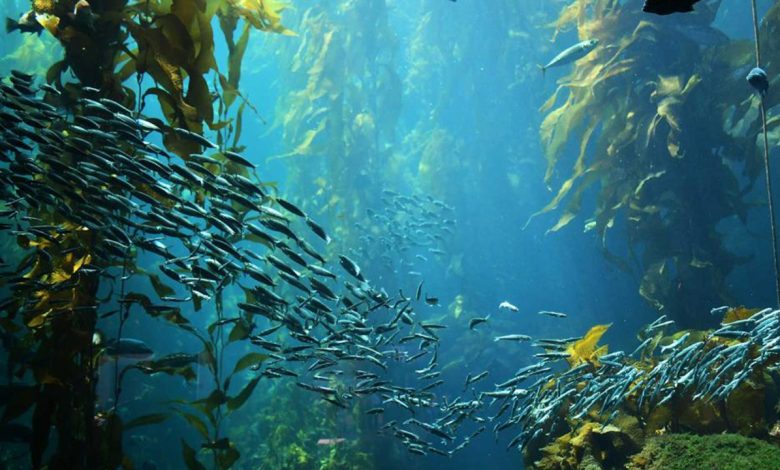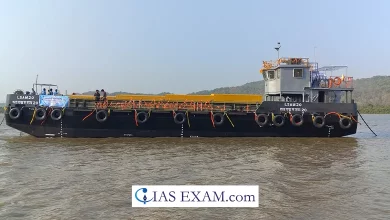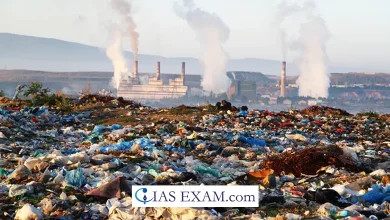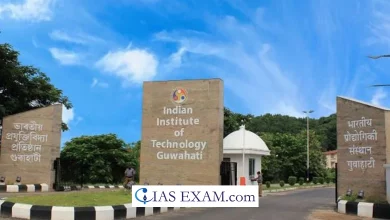Daily Current Affairs for UPSC
International Marine Protected Areas Congress
Syllabus- Environment and Ecology [GS Paper-3]

Context- The 5th International Marine Protected Areas Congress (IMPAC5) was recently held in Canada to hold discussion on the solutions to address the Funding Gap of Marine Protected Areas (MPAs).
Key Highlights
- So far about 70% of MPAs are underfunded.
- A well-managed and sufficiently funded Marine Protected Area can restore good health to vulnerable ecosystems.
- Achieving sustainable and resilient MPA networks depends on a commitment to provide protection, leadership and engagement from stakeholders, institutions, governments and organizations, Indigenous peoples, coastal communities, as well as individuals in a comprehensive and equitable manner in order to facilitate ocean protection.
- IMPAC5 aims at providing a forum for knowledge sharing, successes and best practices in an open and respectful environment for the exchanging of ideas among a variety of views.
Importance of MPAs
- MPAs can generate feasible revenues for their own administration.
- Revenue can be generated from statutory as well as non-statutory MPA fees for tourism programmes, blue carbon credits initiated from mangrove conservation and avoided deforestation and seaweed farming and sustainable coastal fisheries.
Marine Protected Areas
- These are identified areas of the ocean which are set aside for the protection and conservation of marine ecosystems and also to protect their biodiversity.
- Within the area, certain activities are limited, or mainly prohibited, in order to achieve specific conservation, habitat protection, ecosystem monitoring or fisheries management objectives.
- MPAs do not inevitably exclude fishing, research or other human activities; in fact, many MPAs are multi-purpose regions.
Need for Establishing MPAs:
- Biodiversity Conservation:
-
-
- MPAs mainly aid to protect and conserve the diversity of marine species and their habitats, preserving the delicate balance of marine ecosystems and the services they provide, including food and oxygen production.
-
- Viable Fisheries:
-
-
- MPAs can also help to manage fishing activities and prevent overfishing, ensuring fish populations are able to recover and remain healthy, which further supports sustainable fishing practices.
-
- Climate Change Mitigation:
-
-
- MPAs act as carbon sinks, helping to absorb and store carbon dioxide from the atmosphere and mitigate the effects of climate change on marine ecosystems.
-
- Research and Education:
-
-
- MPAs also provide adequate opportunities for scientific research and educational activities, helping to increase the understanding of the marine environment and promote ocean literacy.
-
- Economic Benefits:
-
- MPAs also help local economies by attracting tourists, providing opportunities for sustainable tourism and recreation, and supporting local fishing communities.
Treaties, Conventions and Agreements:
- Agreement on the Conservation of Cetaceans of the Black Sea, Mediterranean Sea and Contiguous Atlantic Area
-
-
- It particularly aims to establish a network of specially protected areas in order to conserve cetaceans.
- It prohibits the intentional killing of cetaceans in national waters.
-
- Bern Convention:
-
- It was formulated under the aegis of the European Community Council in 1979.
- It has been in force since 1982 and also covers European states.
- CITES:
- CITES was formulated under UNEP in 1973, Convention on International Trade in Endangered Species of Wild Fauna and Flora (CITES).
- It has been in force since 1975 and has worldwide application.
- It regulates international trade of species listed on three appendices.
- EU Habitats Directive:
- It was formulated by the European Community Council in 1992.
- The EU Habitats Directive applies to all EU states, such as the Azores and Madeira (part of Portugal) and also the Canary Islands.
- CCAMLR:
- Commission for the Conservation of Antarctic Marine Living Resources is a multilateral response to concerns that increases in krill catches in the Southern Ocean.
- It could be detrimental for Antarctic marine ecosystems mainly for seabirds, seals, whales and fish that depend on krill for food.
Marine Protected Areas in India
- In India, there are 33 national parks and wildlife sanctuaries designated under the Wildlife (Protection) Act of 1972 which make up the country’s MPAs.
- Marine National Park and Marine Sanctuary in the Gulf of Kutch form one unit and Bhitarkanika National Park and Bhitarkanika Sanctuary are an essential part of one MPA. Hence, there are a total of 31 MPAs in India.
- MPAs cover around 4.01% of the total area of all Protected Areas of India.
IMPAC
- IMPAC congresses are a joint effort between the International Union for the Conservation of Nature (IUCN) and the other chosen host country.
- The congress brings together scientists, policy makers, practitioners, and stakeholders from all over the world to hold discussion on the latest scientific knowledge, best practices and challenges in the management of MPAs.
- The aim of IMPAC is to facilitate the conservation and viable use of the world’s marine biodiversity and also to support the implementation of the United Nations Convention on Biological Diversity’s goals for marine conservation and management.





.png)



